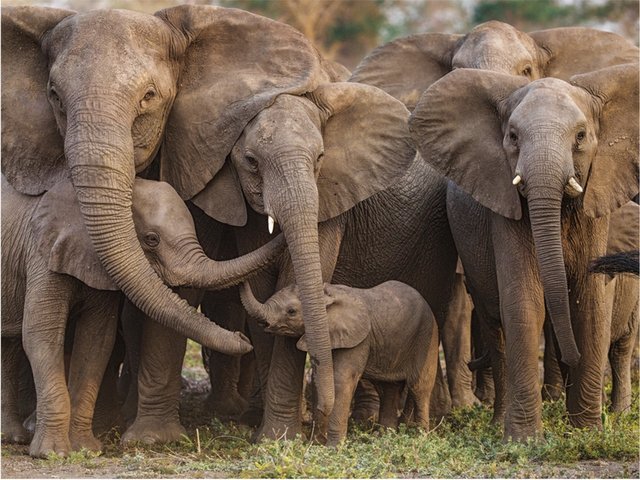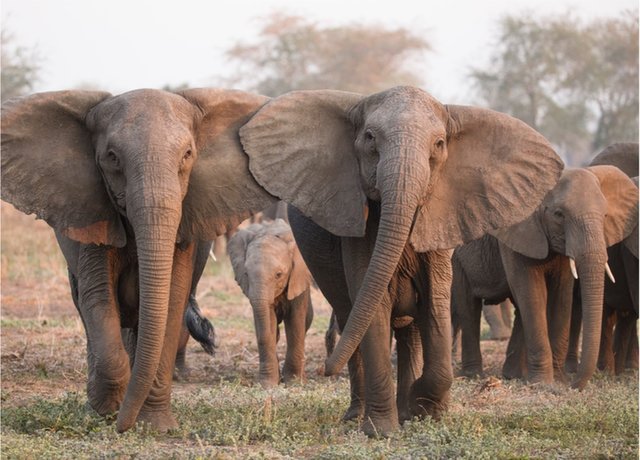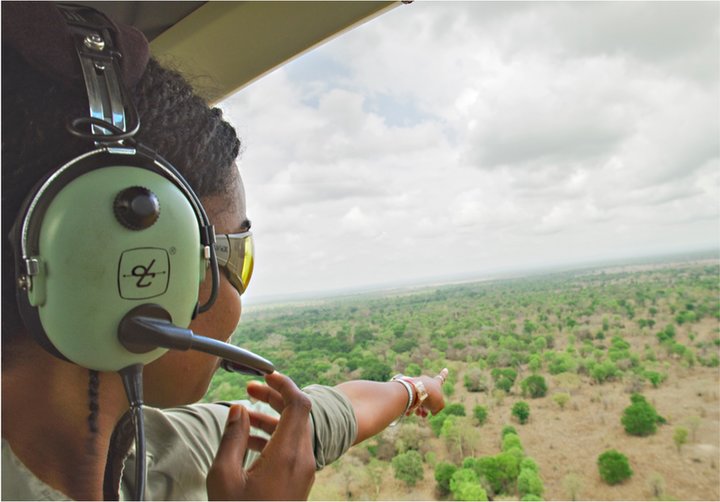HopingtoHelp
Gonçalvesandherteamcameuponamotherandherinjuredcalfoneday.Thecalfwaslimping.Itsleghadbeencaughtinasnare.Thewoundwasveryserious.Gonçalvesknewthebabyneededtreatmentoritwouldnot survive.
Shecalledinreinforcements.Avetflewinonahelicopterwithmedicinesandsupplies.Unfortunately,themothersawpeopleasthreats.Asheragitationgrew,shetoretwosmalltreesfromtheground.Thenshepickedupalargestickwithhertrunkandbeganwildlythrashing it.
Lookingpastthemother,theteamcouldseethebaby,hiddeninthebrush.Theteamstayedinplaceforhours,hopingthatthemotherwouldletthemapproach.Itwasnottobe.Shefinallyboltedintothebrushwithherwounded baby.
Fourdayslater,themotherwasspotted.Shewasalone.Gonçalvesknewthebabyhadnotsurvivedbutwasstruckbyhowfiercelythemotherhadfoughttoprotecther.Itwas,Gonçalvesthought,muchlikehowahumanmothermight behave.

Thematriarchleads,buteveryoneintheherdlooksoutforone another.

Amatriarchmightleadherfamilytotheforestinthemorningorleadthemtowaterinthe afternoon.
RoomtoRoam
Today,therearemorethan650elephantslivinginGorongosa.Historically,theelephantshadfreerangeofthepark.Now,withamuchsmallerpopulation,theystayinthesouthernpartofthepark.Astheherdsgrow,Gonçalveswonderswhichareastheywillchoosetoliveinandwhatwillhappenwhentheycomeincontactwithpeopleonaregular basis.
Elephantsneedroomtoroam.Amatriarchmightleadherherd10kilometers(6.2 miles)adayormoretosearchforfoodandwater.Shemightchoosetotakethemthroughavillagewhilethevillagerssleep.Theelephantsmaychoosetosnackonthevillagers’cropsastheypass through.
BigTrouble
Asfearfulastheelephantsareofpeople,thepeoplehaveahealthyfearoftheelephants,too.Andnoonewantsanunpredictableelephantdestroyingtheir crops!
Gonçalves’goalisforpeopleandelephantstopeacefullycoexist.Avoidingconflictsbetweenpeopleandelephantsisimportanttobothspecies!So,akeypartofherjobistokeeptrackofwheretheelephantstravel.Thatinvolvescollaringandtrackingalloftheir movements.
Collaringanelephantiseverybitashardasitsounds.First,youhavetofindanelephant.Gonçalvessaystheyoftensearchforelephantsby helicopter.
Adedicatedteamisinplaceforthetask.Whentherightelephantisfound,theteamgoesinto action.

Gonçalvessearchesforelephantsby helicopter.
GettingaSignal
Theteamfiresatranquilizerdartattheelephant,whichmakestheanimalsleepy.Onceit’sasleep,theteamcanland.Theteamdoesn’twastetime.“Theeventshappenquickly,”Gonçalvessays.“Everyonehasa role.”
Somemembersoftheteamtakemeasurementsofandsamplesfromtheelephant.Othershelpfitthecollararoundtheelephant’sneck.Theteamworkstogetherandtakesnotesontheirwork.Thentheywaitfortheelephanttowakeupandgetbackonher feet.
Oncethecollarisinplace,theteamwillreceivedatafromiteveryhour.Thebatteriesarelong-lastingandwillyielddatafortwoyears.Gonçalveshascollared10femaleelephantssofar,andshemonitorseverywherethey go.

atranquilizer dart

Gonçalvesandtheteamtakesamplesfromamatriarchwhiletheycollar her.